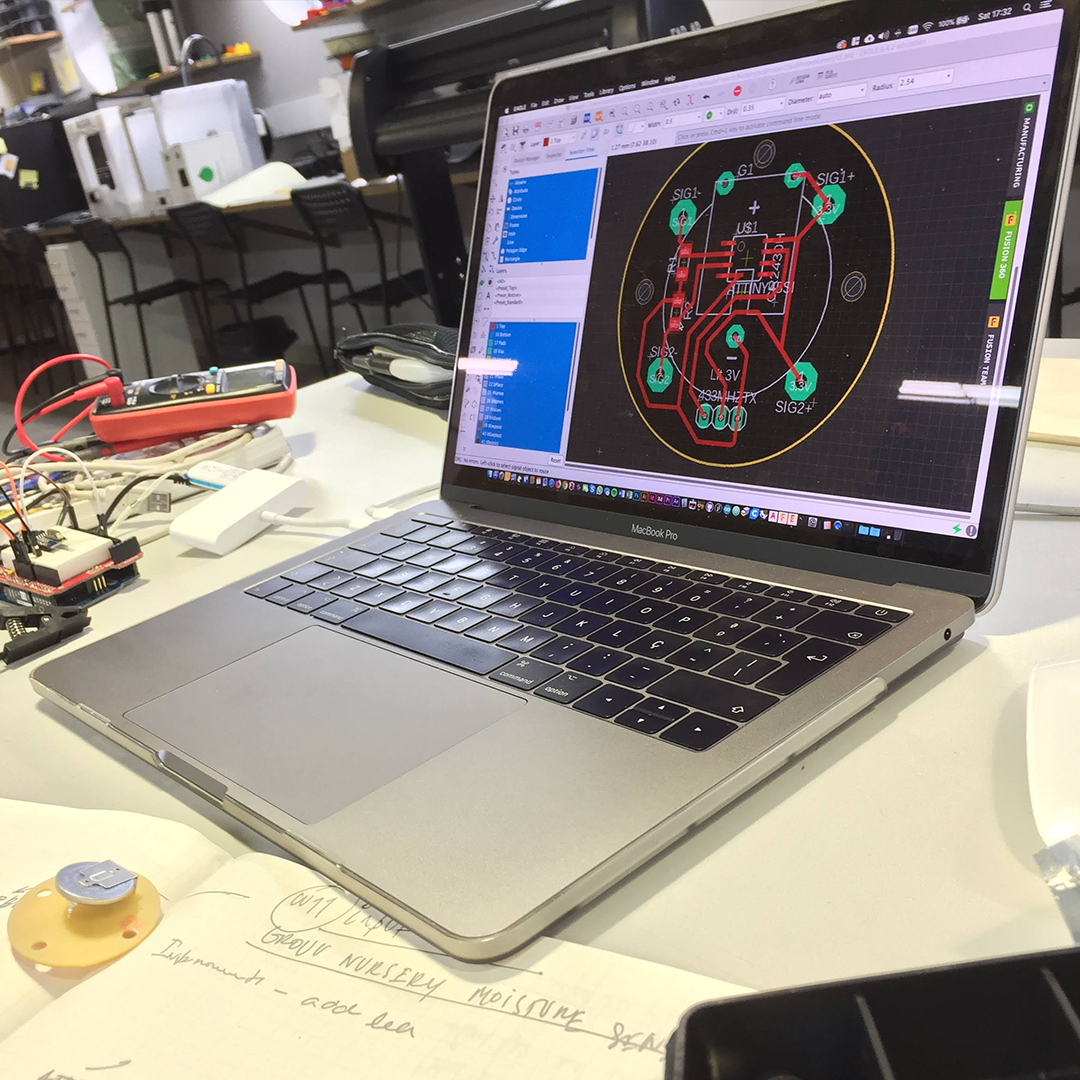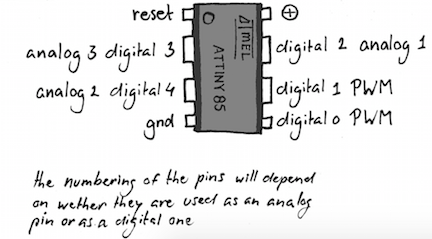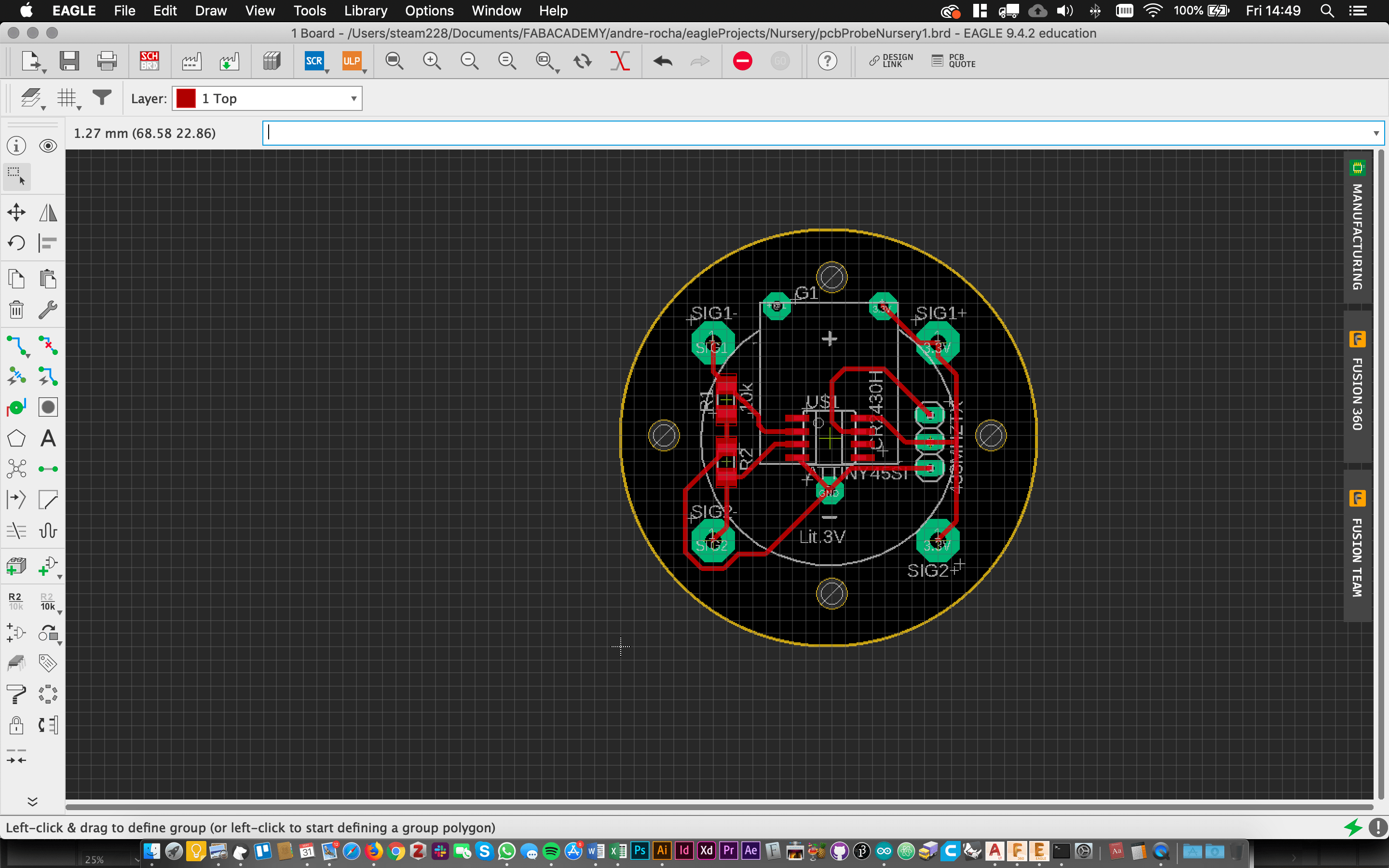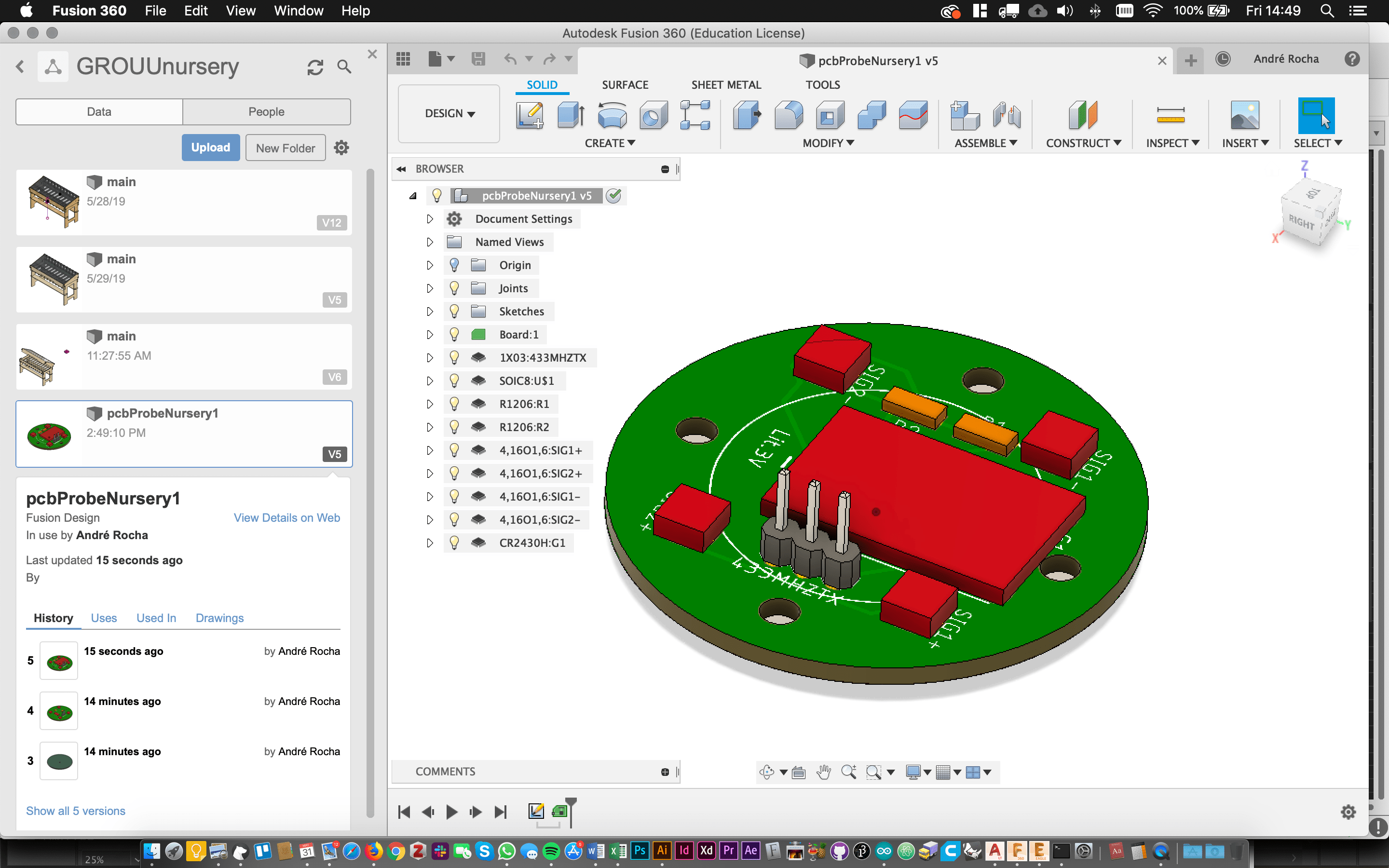
I want to design a Moisture Probe with two sensors, aimed at measuring the moisture at the bottom and top a tiny nursery vase unit. To design the board, I will include here I will want to use the tiniest possible Fab Inventory available AVR - The Attiny45 (shifted to 85 later on).
This board was studied as a simple input device, but some communication features where introduced as part of Week 14 - Networking and Communications. Nevertheless, they are negligible for this purpose.
This will support two sensors each built from 2 electrodes and a resistor:

I’m planning to integrate two very simple conductivity probes. To do so, I will have to design a custom part in eagle: Two 6 mm pads with a 2,5mm hole in the middle. A Square and a rounded one to distinguish - and + poles. This will allow me to set up a regular distance, which is also essential for calibration purposes.



Programming ATtiny85 with Arduino Uno - Arduino Project Hub
Using a _ see aliexpress thing to hold the attiny45 sop-8.
Using Arduino as ISP

This work follows the work done previously when adding the moisture probe directly to the ESP8266 sensor board. Now it was time to bring modularization even further and added two levels of moisture probing to a simpler (node) board.
//test code for Analog Moisture Probe (W11 - Input Devices)
//define a Serial Port
#include //call software serial for attiny
//choose RX and TX pins
SoftwareSerial testSerial(3,1); //rx, tx
int SIG1 = A1;
int SIG2 = A2;
void setup() {
testSerial.begin(9600);
}
void loop() {
testSerial.print("SurfaceMoist: ");
testSerial.print(analogRead(SIG1));
testSerial.print(" || DeepMoist: ");
testSerial.println(analogRead(SIG2));
}